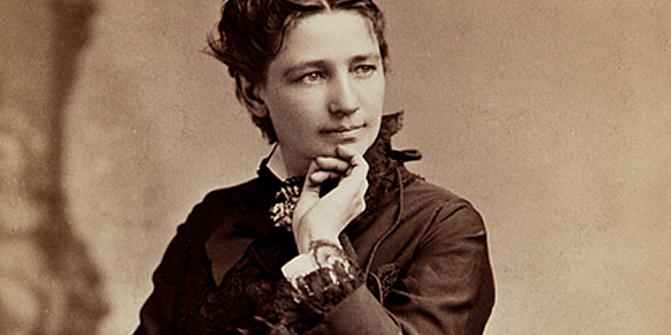Before Hillary Rodham Clinton, there was Victoria Claflin Woodhull, a pro-life feminist who sought the presidency of the United States.
Woodhull was born in 1838 to parents Buck and Annie Claflin, and was one of 10 children living in a run-down home in Ohio. She had an unfortunate childhood, having a father who forced her to travel around as a child preacher and fortune teller. Woodhull did not have much education, and never stepped foot in a classroom. She first married at the age of 15, and would marry two more times throughout her life. But it was her second marriage that sparked Woodhull’s interest in equal rights for women and the preborn.
According to a Politico article, Woodhull’s second husband, Col. James Blood, was a Civil War veteran who “encouraged Victoria’s self-education and interest in women’s rights.”
Victoria especially, from a poisonous first marriage, transformed into a woman with a mission – determined and fearless in her demands that women have an equal place in the country.
Becoming the first female stockbrokers, Woodhull and her sister, Tennessee Claflin, invested their money into Woodhull and Claflin’s Weekly, a newspaper that lasted six years. In her editorials, Woodhull talked about the preborn’s right to life.
Cat Clark of Feminists for Life highlights Woodhull’s commitment to the sanctity of human life.
“There is no question that Woodhull’s commitment to equal rights for all people extended to children in the womb,” Clark said.
In one of her editorials about the rights of children, Woodhull wrote, “The rights of children, then, as individuals, begin while they yet remain the foetus.”
In another editorial titled, “When Is It Not Murder To Take Life?” Woodhull suggests that life beings at conception and ends at death.
The beating of the heart, modern science tells us, never begins; that is to say, there is no time in the whole process of the growth of the human body from the moment of conception until death, that pulsations of life are not present in what is to develop into the perfected body.
While Woodhull’s newspaper differed from pro-life feminists Susan B. Anthony and Elizabeth Cady Stanton’s Revolution – mainly on the policy that Woodhull allowed for pro-abortion pieces to be published, while Anthony and Stanton didn’t even allow for abortion-related advertisements – her readers knew she was against abortion.
“Whoever has read the WEEKLY knows I hold abortion… to be just as much murder as the killing of a person after birth is murder,” Woodhull wrote.
During her time as editor of the newspaper, Woodhull ran and was nominated for president in 1872. She was the first female candidate to run for the position, choosing to spearhead the Equal Rights Party. Frederick Douglass, former slave and abolitionist, was nominated for the vice presidency by her party. He did not accept the nomination, and instead supported President Ulysses S. Grant, the Republican incumbent.
Although Woodhull did not go on to win the election, she did become the first pro-life feminist to run for the presidency. Her outspokenness against abortion proves that authentic feminism upholds the dignity of all human life, especially the preborn.







